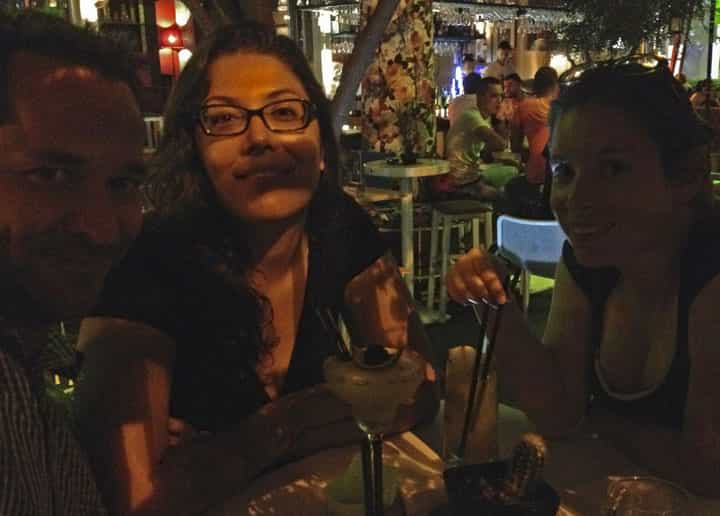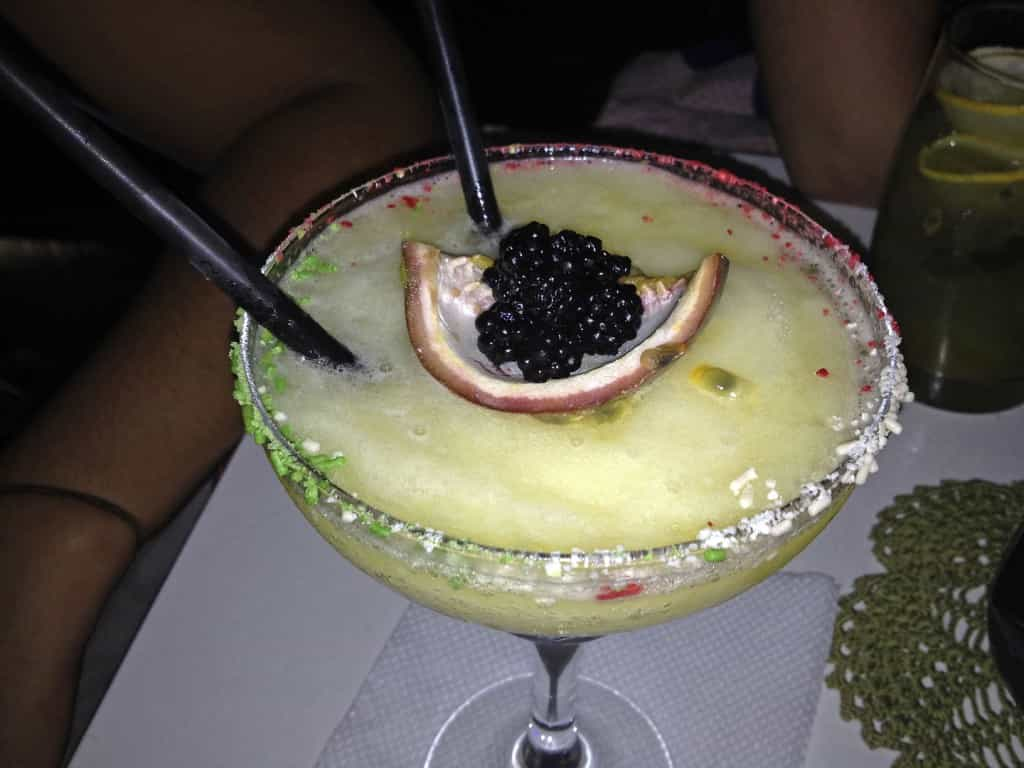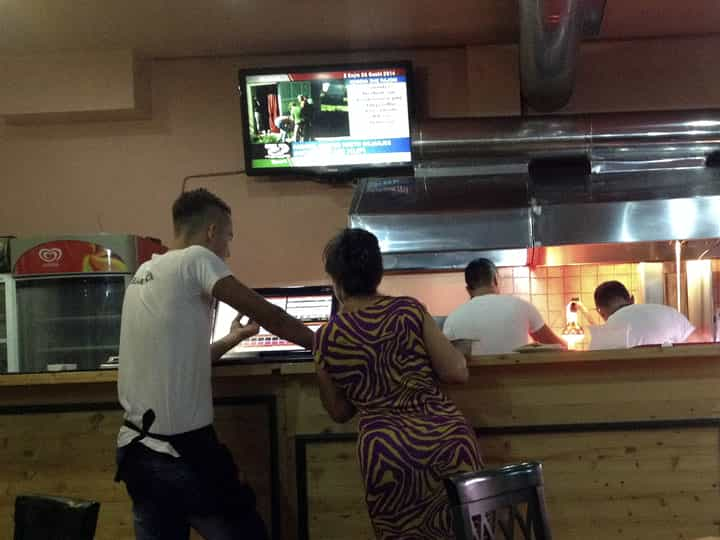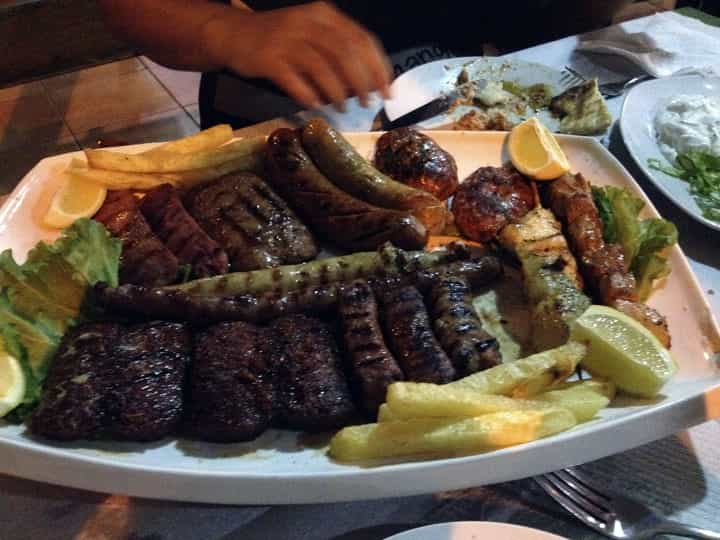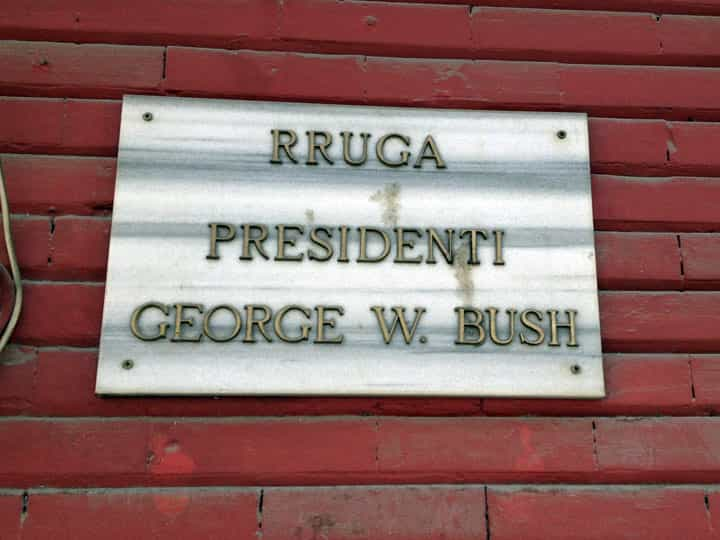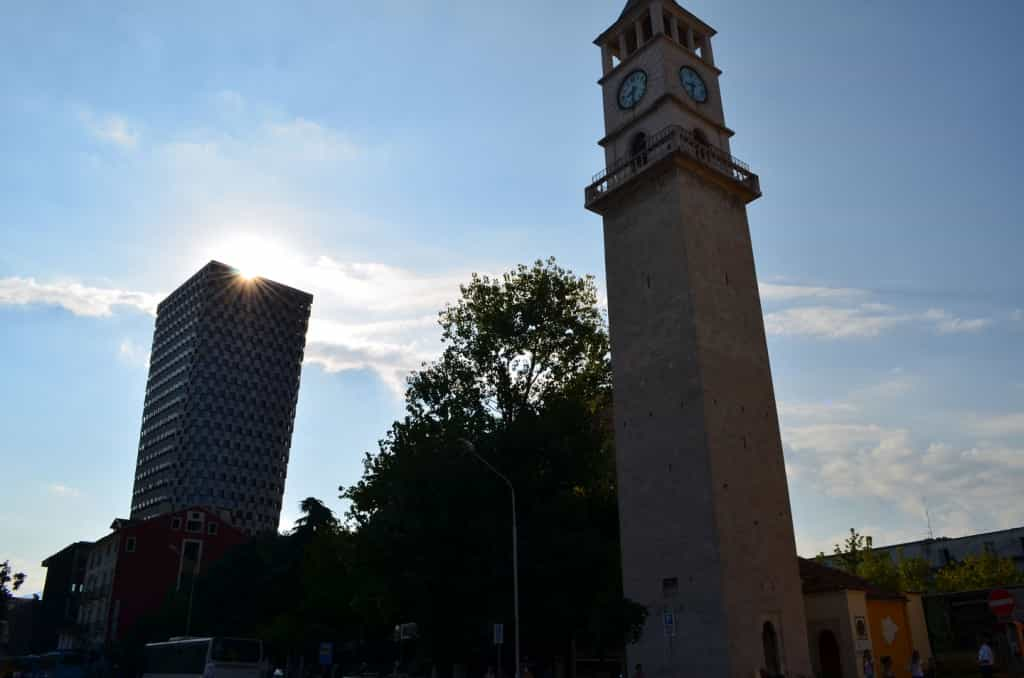We arrived in Tirana with very low expectations. While tourism along the Albanian Riviera is rapidly developing, the capital has the reputation of having little to offer to visitors.
To be honest, there is some truth to this. There aren’t many attractions for tourists. And just our luck, the National Historical Museum was closed for renovations until mid-September, possibly in preparation for the upcoming visit of Pope Francis. But for what it lacked in “sights”, Tirana easily made up with tons of cool bars, good restaurants, both traditional and trendy cafes, nice parks and quiet pedestrian streets. I am not sure what we would have done had we stayed there a week, but we agreed that based on our first impressions, coming here for some sort of job, on a contract of say a year, would be pretty cool and probably enjoyable.
For one thing, I would strangely feel at home! While we didn’t try the Albanian Colonel’s secret recipe, we did eat at local eateries for very cheap. Not 100% sure what we were ordering, but the locals, especially the young ones, spoke enough English to get by. In trendy places, communication was not a problem at all.
Dark selfie at Grandma’s Bar, a very trendy place in the most expensive part of town, which used to be restricted to the senior communist bureaucrats (then known as the “black area”). Side note: living anywhere in Tirana used to be restricted to those deemed loyal. After the fall of the regime, the capital’s population exploded, more than doubling in a few years.
This is the kind of cocktail they serve, complete with fresh berries and all. If you go to the grocery store, for the price of this drink you can get 6 litres of beer! But for the three of us, earning money in dollars, swiss francs or euros, it’s still only $5.
Grandma’s Bar! We asked the barman if there was a good local cuisine restaurant nearby. “No, this is the rich area, there is no traditional food”. So we just went randomly looking for a restaurant and saw one that actually looked like a traditional place. We paused and discussed it.
And there arrived the owner (seen here bossing the boys around), talking to us in very good French! She didn’t bring us menus, or even asked what we wanted, beyond Albanian food. She informed us we would have a mixed grill plate with some sauces, and asked what we wanted to drink.
And this slice of Noah’s Ark arrived! We couldn’t finish it between the three of us. Probably the most expensive thing on the menu, in the most expensive neighbourhood, and still, with drinks, I vaguely remember the bill was 30, although I don’t remember if that’s dollars or euros.
The twentieth century was a tumultuous one for Albania. In the space of only 80 years, Albania was part of the Ottoman Empire (~15th century-1912), a Republic (1912-1914), a Principality (1914-1925), another Republic (1925-1928), a Kingdom (1928-1939), an Italian Protectorate (1939-1943) a German Protectorate (1943-1944), a Communist State (1944-1992) and a Republic again! These are more political changes than what has occurred in Canada since Jacques Cartier landed in 1534!
Want more proof that Albania has a complex history?
In this majority Muslim country (57%), our hotel was located close to the intersection of Joan of Arc Boulevard and George W. Bush Street!
I didn’t get a feeling that religion is such an important thing here. A lot of Albanians are religious on paper, but it is not a defining part of their identity (although in the 1990’s, Saudi Arabia and Qatar financed a lot of religious schools in the country to promote the medieval savagery that is Wahhabism, but today the more tolerant “Ottoman” Islam seems to dominate again). Since the Ottoman Empire and Albania both shared the same religion, in the struggle for independence identity had to come from something else.
It came in language and the attachment to this character, the National Hero Skanderbeg, who defeated the Ottomans in several key 15th century battles.
But there is still a religious revival, as in all countries where religion was suppressed by communism. In the brand new Resurrection of Christ Orthodox Cathedral, you can admire this impressive mosaic. I wonder where they found artisans capable of building this sort of mosaic in this day and age. A surprisingly massive construction, considering less than 7% of Albanians are Orthodox.
While only 10% are Catholic, Mother Theresa is still very popular. She was born in Macedonia but was ethnically Albanian. I can’t say I’m a fan, but that is another story.
You can see a lot of contrast between the old and the new here, like some modern skyscraper behind the old Tirana clock tower. You can also climb up the clock tower for the view, but the opening hours are limited and it is closed on the week-end, when I was there.
In fact, there are a lot of new buildings around the city.
This one not so new, but the cafe right on Skanderbeg Square was very pleasant.
And you can still do communist tourism. This pyramid was designed to house a museum to the greatness of the dictator after his death. That didn’t last and it became a conference and exhibition centre. Then it was supposed to be demolished so a new Albanian Parliament could be built on the site. The exterior tiles were removed, leaving only the concrete structure, and then the project was indefinitely suspended. Albanians seem to have a love-hate relationship with it. Tourists on my walking tour also seemed split between: “It’s a unique thing and a part of the country’s history” and “It’s an eyesore, tear it down”.
Before dying, this is where Hoxha lived. Again, I think Albanians are not sure what to do with it.
And obviously not a symbol of Albanian communism, but a piece of the Berlin wall.
I will conclude my Albania stories by going back to my last post. I mentioned that Albanian police faced mortar and rocket fire when they attacked a drug dealing village. But I forgot to explain where the weapons came from (at least in part). In the early 90’s, criminals began setting up Ponzi schemes (a.k.a. pyramid schemes). They offered ridiculously unrealistic returns on investment, but the Albanian people had been completely isolated from the world in general and the world of investment in particular, and even smart and educated people were quite naive about money matters of this sort. With interest rates of 10 or 20% A MONTH, people sold there houses to invest in the schemes. As many as two thirds of Albanians invested and when the system crashed in 1997, the citizens of this poor country of less than 3 million people collectively lost the staggering sum of US$1.2 billion!
The country erupted into total anarchy and rebellion. Thousands were killed or injured and Greece, Italy, Germany and the USA all sent military forces to evacuate their citizens. In the period of anarchy, bandits (and probably furious citizens) raided police and military barracks and stole the weapons! The whole story is more complicated than this, but it gives you an idea of the incredible challenges Albania faced after the fall of the dictatorship.
But don’t worry, the Albanian mob is only interested in moving tons of drugs into the EU, not in stealing your purse. Since there is little tourism, even overcharging tourists is something I never noticed in the country. So if you are looking for something different yet safe and easy, go to Albania!
#Albania



